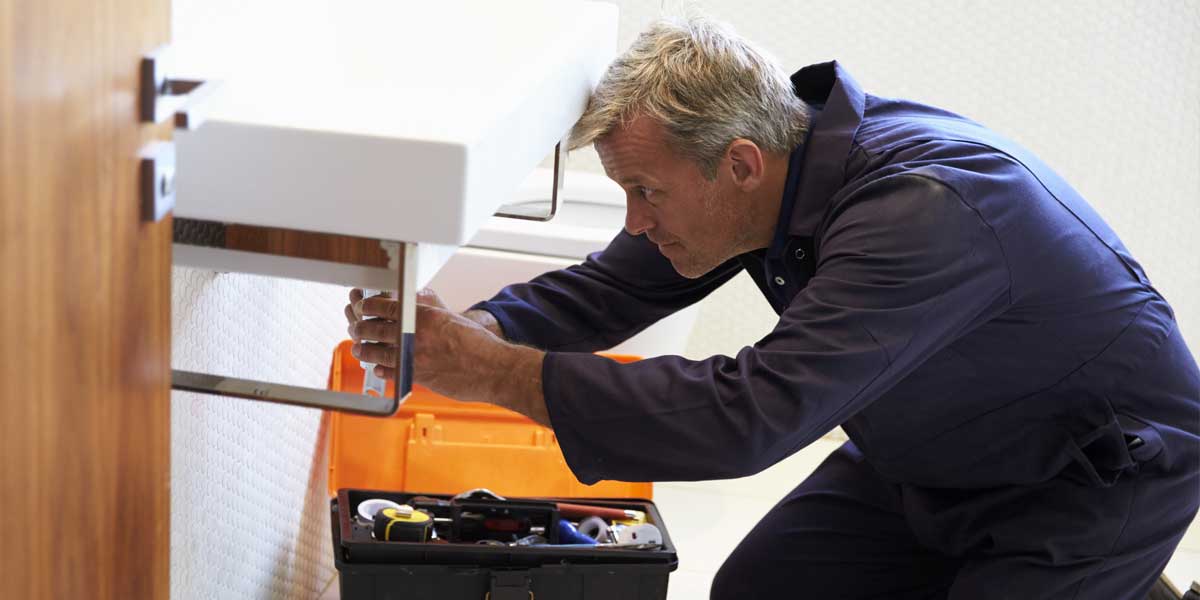The drains in your bathroom are constantly swallowing hair shavings, soap scum and toothpaste. Fortunately, by knowing how to unclog a bathroom sink, you can often solve problems without having to call a plumber.
In this article, we’ll go through four methods you can use to unclog your sink.
Method 1: Clear clogs on the pop up stopper
Since the bathroom is where you shave, most bathroom sinks have a pop up stopper or plug to catch hair and other clogs. You can pull up the pop up stopper to remove any clogs that are close to the surface.
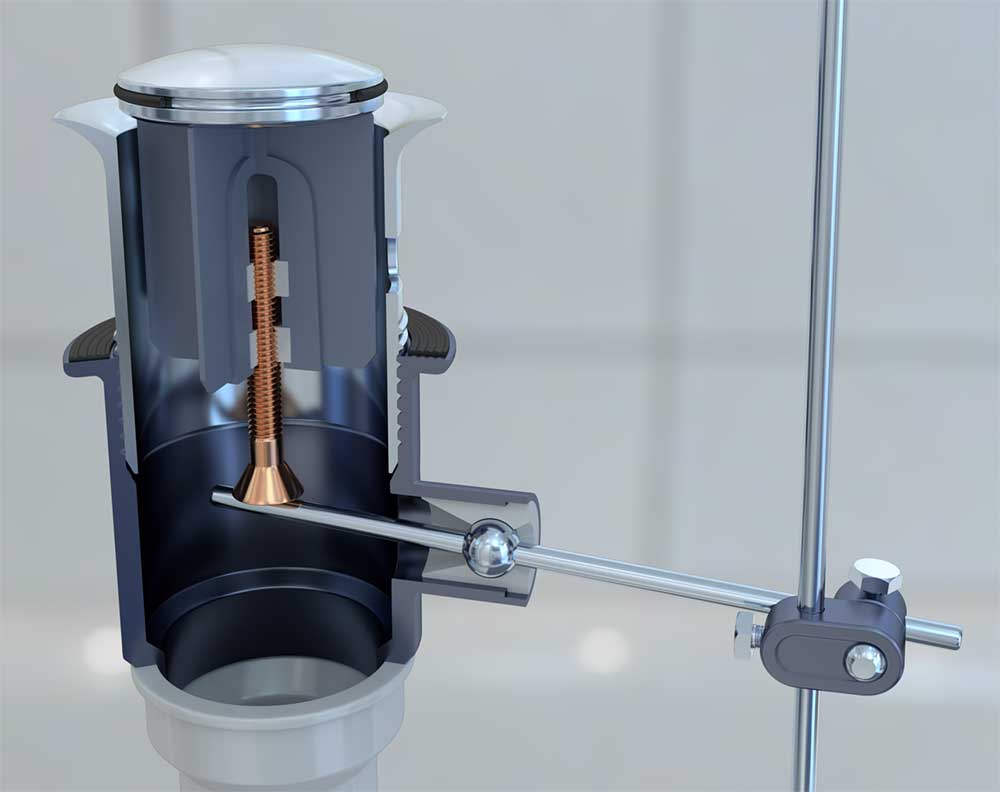
Some pop-up stoppers are designed to remove easily. Try pulling up on the stopper and gently turning it to see if it will come out.
If it doesn’t remove easily, you’ll have to go under the sink and disconnect it.
How to remove and clean a pop up sink plug
- Under the sink cabinet, find the stopper’s tail pipe. It’s the long, straight piece hanging down from the bowl of the sink.
- There will be a rod sticking out the back of the stopper’s tail pipe, running to a piece hanging down from the faucet. Where the rod connects to the tail pipe, there will be a large nut—find this.
- Remove the nut. Try using your hands first to see if it will turn. If not, you’ll need to use pliers or the correct size wrench.
- Once you remove the nut, you can pull the stopper straight up out of the sink.
When you get the stopper out, clean off any hair or debris. You may also want to wash it with soapy water and an old toothbrush.
When you’re finished, put the stopper back in and reattach the rod and nut. Try running hot water to see if the sink is draining properly now.
Helpful tool: To help you clear out the drain, once you have the pop up sink plug out, you might pick up a plastic drain cleaning tool. They’re available at Canadian Tire or many dollar stores for less than five dollars.
Method 2: Use vinegar on slow-draining sinks
If your sink is draining slowly but not completely clogged, try cleaning it out with vinegar.
We’ve written before on why we recommend using vinegar over chemical products like Drano. It’s effective, safer for your home and the environment, and you may already have it in the house.
How to unclog a bathroom sink with vinegar
- Get two litres of vinegar. We recommend cleaning vinegar, because it has a higher acidity level than white vinegar.
- Pour the vinegar down the clogged drain and let it sit for 15 minutes.
- For a very slow draining sink, try pouring half a cup of dry baking soda down the drain. Pour a mixture of vinegar and water (one cup of each) down on top and plug with a stopper. Let it sit for 15 minutes.
- Rinse the drain with hot water and see if the clog has improved.
If you don’t notice a difference or if the drain is completely plugged, move on to the third method.
Method 3: Use a plunger for close-to-the-surface clogs
If the clog is fairly close to the surface, you may be able to dislodge it using a plunger. Plunging works by applying suction and then pressure back-and-forth to knock loose any blockage.
Use a sink plunger, which looks like a half basketball cup on a stick.
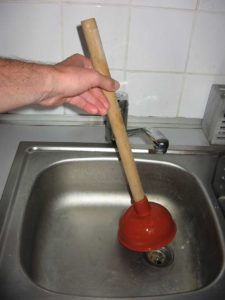
How to unclog a bathroom sink with a plunger
- Remove the sink stopper, following the steps from Method 1.
- Plug the sink drain with a wet cloth.
- Place the plunger cup so that it completely covers the sink drain hole.
- Fill the sink with an inch of water or enough to cover the edges of the plunger cup.
- Plunge down once gently to release air and get a good seal. You’ll feel the plunger “grip” the sink drain when it seals. If you have trouble getting a good seal, it may help to stand on a chair to position yourself directly above the drain.
- Plunge vigorously up and down, trying not to break the seal, six to ten times. Repeat as needed.
- When you remove the plunger and the cloth, pull up and remove any debris that has been dislodged. It may help to shine a flashlight or the light on your cell phone down the drain to check for debris.
If plunging doesn’t help, the clog may be further down the pipe.
Method 4: Disconnect the p-trap and snake the drain
This method for how to unclog a bathroom sink is a bit more advanced, but very effective. By opening up part of the sink pipe and using a drain auger, you can remove any clogs within the first few feet of pipe.
For this method, you’ll need:
- A sponge
- A bucket to catch water
- A wrench or pliers to disconnect the p-trap
- A drain auger or plumber’s snake, which you may be able to rent from Home Depot
- Leather safety gloves—these are very important! Without proper gloves, you could badly cut your hands.
Disconnect and clean the bathroom sink p-trap
If there’s water in the sink, sponge up as much as you can. Then, look under the sink basin for the p-trap: the part of the pipe that curves like a U or an elbow. This little bend in your pipes creates a water barrier that blocks sewer smells from wafting up into your bathroom.
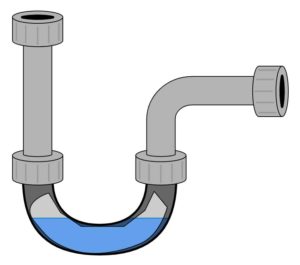
Put your bucket underneath this section to catch any water. Then, using your hands or an adjustable wrench, loosen the nuts to disconnect the p-trap. Once you have the p-trap off, you can clean out any debris inside it.
If you don’t find a blockage inside the p-trap section of pipe, that means the clog is further down. You’ll need to snake the drain.
Snake the bathroom sink drain
Before you can snake the drain, you’ll need to remove the section of pipe between the drain in the wall/floor and the p-trap, called the trap arm. Using your hands or an adjustable wrench, unscrew the nut connecting the trap arm to the drain.
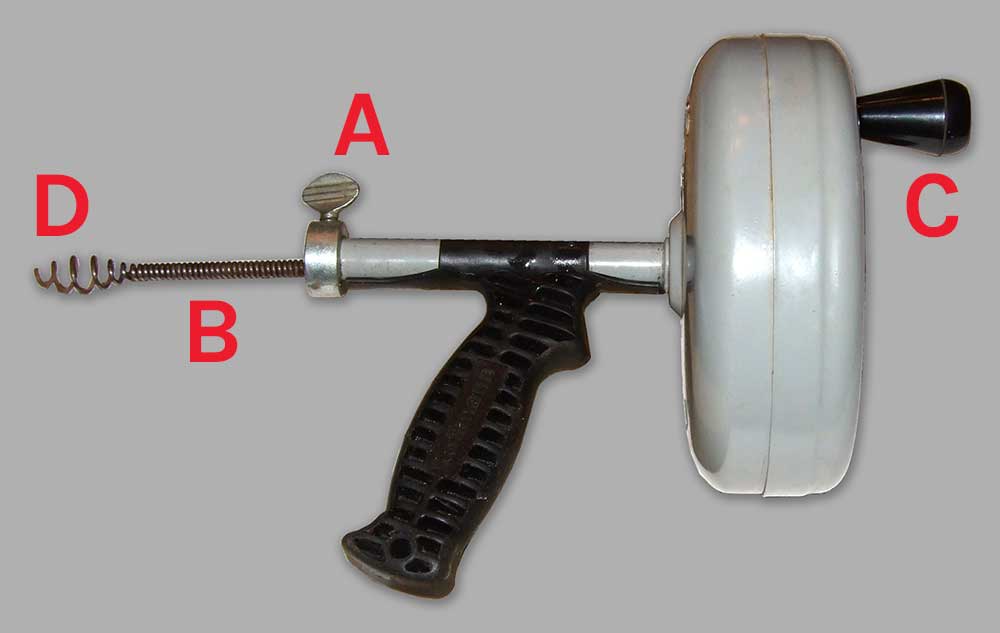
How to snake a bathroom sink drain with a drain auger
- Loosen the screwset (A) at the end of the barrel of the drain auger, where the cable comes out.
- Pull out six to ten inches of cable (B) and then re-tighten the screwset.
- Feed the cable into the entrance of the sink drain and crank the handle (C) to feed it deeper in. You may feel a blockage right away, but that’s probably the cable bending around a corner.
- When you’re able to get the short cable all the way in, loosen the screwset and pull out another six to ten inches. Retighten the screwset and continue cranking the cable deeper into the drain. Repeat until the cable is entirely in. Note: Some augers lock automatically, so you won’t have to bother fussing with the screwset.
- When you feel the cable hit a blockage, continue cranking the handle. The motion of the spinning auger head (D) breaks up or catches any material it finds. However, don’t apply too much force and stop if you hear a metal scraping sound—otherwise, you could damage your pipes.
- If you feel that cranking becomes easier or the cable is moving deeper after you’ve hit a blockage, you may have cleared it. Continue cranking until the cable is all the way in.
- When the cable has gone all the way in, crank the auger in the opposite direction to pull the cable back up. Clean any debris you find off the auger head and cable.
You can now reattach the trap arm and p-trap and try running water down the sink to check that the clog has been removed.
Helpful tip: Do yourself a big favour and have a paper towel ready to clean off the auger as you pull it out. Some of the rental tool places will charge you if you bring back an auger that’s too dirty.
Still clogged? Time to call a plumber
By following the steps in this article, you now know four methods for how to unclog a bathroom sink.
However, in some cases the clog may be too far down the pipe or stuck too solidly for you to remove on your own. In these cases, it’s time to make a call to your local neighbourhood plumbing company.
Do you live in East Toronto and have a clogged bathroom sink? Give Neighbourhood Plumbing a call today (or contact us online) and we’ll get the job done!
